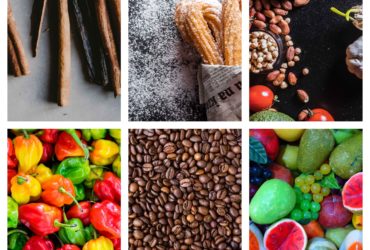BY: ABBIE SOMMER
In our age of social media and “Instagram worthy” food photos, appearance is playing a large role in food “liking” and selection. Social media and the ever-improving smart phone camera have, without a doubt, changed things. Anyone can share what they are eating online. As Elyse Bouvier stated in her article, we are “breaking bread together online, through the sharing [of] images of food” 1.
As a food blogger, I am intimately a part of the world of food appearance and photography. I follow countless food accounts on Instagram and subscribe to more than one food magazine.
As I am writing this article, I currently have more than 5600 pictures on my phone. How many of them are of food? (It would be quicker to count those that are not!) I am constantly posting pictures of what I’m eating on social media and I’m not the only one.
Why do we share food pictures on social media?
On this front, there is some debate. Some say that adolescents post pictures to make a good impression 2. It could merely be about self-presentation or appearances. The careful display and styling of photos do seem to support this theory. Researchers have also found that descriptions of uploaded photos conveyed positive feelings and emotions almost 75% of the time 2. Could it be more about sharing photos including food as a prop, highlighting an occasion, activity, or feeling2? Is the photo about the food or the context in which that food was cooked, ordered, or consumed? It likely varies between people and situationally.
With the growing number of food pictures on social media, it is important to ask the question:
How is social media impacting our relationship with food?
It may be obvious to talk about food and social media in the context of food companies’ advertising. There have been studies looking at food advertising’s effect on obesity or the eating habits of children. However, I am less concerned about companies’ advertising of food because, to some extent, it is regulated.
Companies cannot (or should not) misrepresent food. Bloggers, influencers, content creators or even the average Joe or Jane can.
We share our lives on social media and food is an integral part of this 1. Although along with our actual lives we also share what we want our lives to be.
Many photos of food on social media display beautifully styled components in beautiful kitchens. Take, for example, the photo below of a peach tart. The kitchen is white and bright with marble countertops. The crust is golden and the peaches, caramelized.

Zoom out a little. It’s a fake kitchen.

The lighting? Artificial. The tart? Burned on the bottom. The blueberries? Only added for color. Food companies cannot misrepresent food. I, however, can.
I will be the first to admit that I sometimes make recipes specifically because they are beautiful. I may also choose a dish at a restaurant for this reason, intending on posting a picture on social media. Knowing this, I set out to discover if others think the way I do or if they are impacted by images of food on social media.
In 2016, researchers in Sweden did an exploratory study to see how adolescents portrayed food on social media, specifically Instagram 2. Of the 1001 Instagram accounts analyzed, 854 contained photos of food 2. They also found that there were two main ways that the food was presented, with either the aesthetical features of homemade food, or as part of a lifestyle or event 2. From this article, it is evident that pictures of food are prevalent on social media. But you probably already knew that.
So, is the prevalence of food on social media a problem?
Studies have shown that what foods peers post on social media can impact food choice in children and adolescents 2. This influence can be either positive or negative.
For example, the previously mentioned article noted that the most common foods depicted in the photos (20%) were cookies and pastries 2. Soda and lemonade were in 18.5%, chocolate in 15.8%, ice cream in 11.2% and candy in 11% 2. These are not necessarily healthy food options.

While this may seem concerning, there are also social media accounts that show only healthy foods. You can easily find multiple accounts that solely post pictures of avocados. Thus, it is evident that social media can also be a tool to promote healthy food options. Food photography also introduces new styles of cuisines or types of foods to social media users.

Social media changes the way we look at almost every aspect of our lives. But we can harness it as a tool to promote healthy lifestyles or connect and share details of our culture or personal lives. Posting pictures of what we eat on social media is indeed like “breaking bread online” 1. It is an act of intentionally or unintentionally sharing intimate aspects of our lives.
Speaking of social media, come check out our Instagram and Facebook for more weekly updates, news, and food science!
References
- Bouvier E. Breaking Bread Online: Social Media, Photography, and the Virtual Experience of Food. Interface / Probing Boundaries. 2018;97:157-172.
- Holmberg C, Chaplin JE, Hillman T, Berg C. Adolescents’ presentation of food in social media : An explorative study. Appetite. 2016;99:121-129. DOI:10.1016/j.appet.2016.01.009

Abbie Sommer | Linkedin | Website
After graduating with a B.S. in Food Science from Purdue University, Abbie decided to move one state over to pursue a Masters from Ohio State. Her research is focused on soy-based functional foods for use in clinical trials. When she’s not making thousands of soft pretzels (for science, of course), you can find her training for half marathons or experimenting in the kitchen. Recently, Abbie has developed a passion for sourdough and treats her starter like a child. She also has a recipe blog (Sommer Eats) as well as an Instagram account (sommer_eats), where she posts somewhat healthy but always delicious recipes.






Hello ABBIE SOMMER, thanks for this quality post.